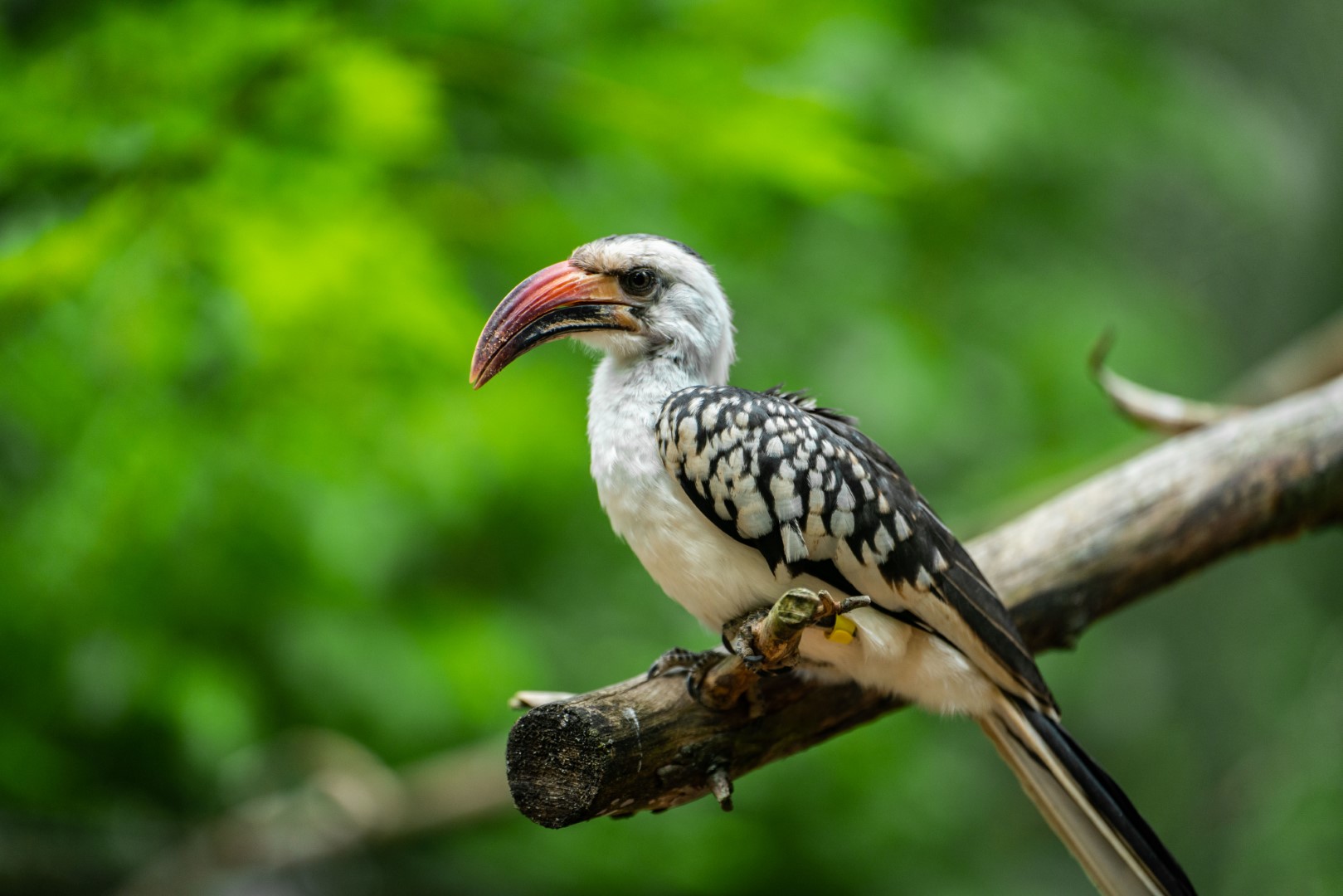Keine Vogelgrippe im Tiergarten: Häuser öffnen wieder

Im Tiergarten Nürnberg gibt es keinen Fall von Vogelgrippe: Das hat eine erneute Beprobung verschiedener Vogelarten ergeben. Das Wüstenhaus, das...
Their long, curved beak is their most striking feature. Externally, both genders look the same, however their beaks differ in size. The females have a slightly smaller beak.
Red-billed Hornbills usually breed in tree hollows. The female builds up a wall, before they lay their eggs. They almost completely close the hollow entrance with clay. Through a narrow opening, the male delivers them food. Even after the chicks are hatched, the male provides for the family until the female opens the cave.


| Scientific Surname | Tockus erythrorhynchus |
|---|---|
| Order | Coraciiformes |
| Family | Bucerotidae |
| Size | till 45 cm |
| Weight | male: 185 g, female 140 g |
| Reproduction | breeding period 23-25 days, 2-7 eggs |
| Distribution | Africa |
| Habitat | savanna |
| Food | Insects, eggs and chicks of small birds |
| Livestock | not endangered |
Der Rotschnabeltoko, ist eine häufige und typische Vogelart der afrikanischen Savannen, die zu den Nashornvögeln gehört. Typisch für diese Vogelgruppe...
Weiterlesen ...